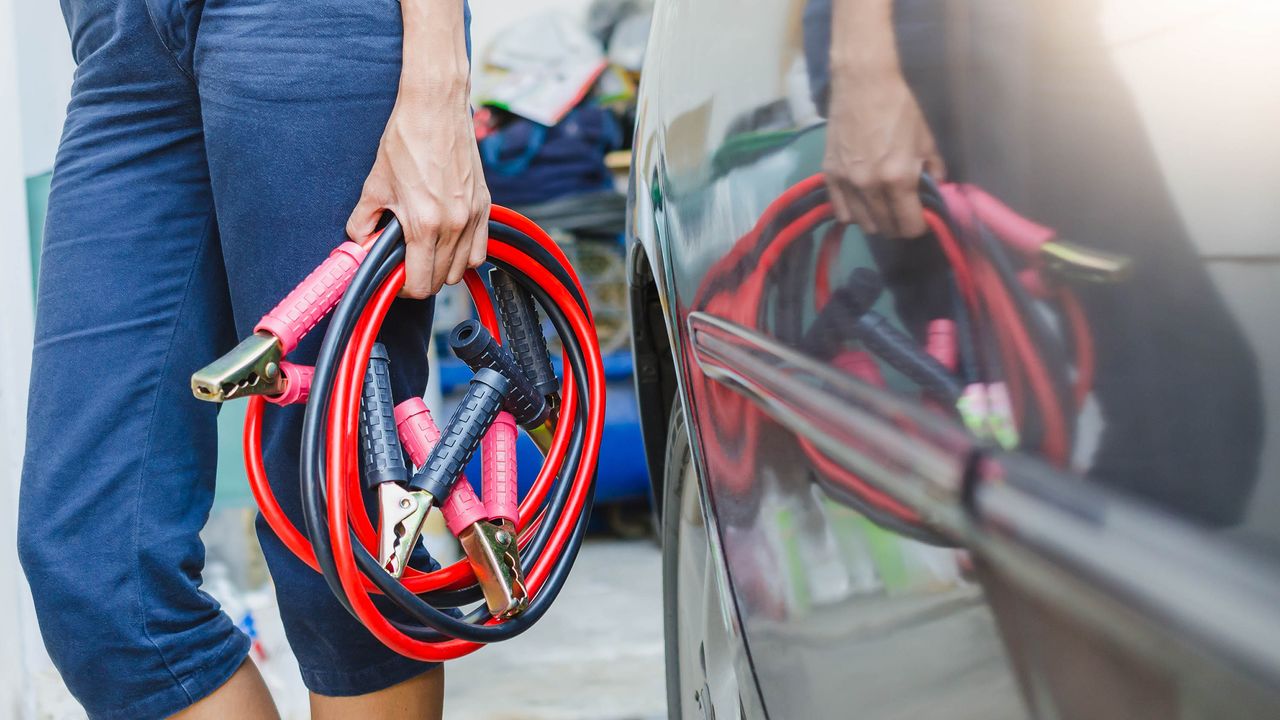Lifestyle
Jump Start Your Car in Five Simple Steps to Get Moving

A dead car battery can halt your day, but the process of jump starting a vehicle is straightforward and can be accomplished within about 15 minutes. Whether the battery has drained due to leaving the lights on or it has simply worn out over time, you can typically avoid calling for roadside assistance. By following a systematic approach using jumper cables, you can transfer power from a functioning battery to your own, allowing you to get back on the road without the need for a mechanic.
Gather the Necessary Equipment and Ensure Safety
To successfully jump start your car, you will need jumper cables, a vehicle with a working battery, and approximately 15 minutes. Before beginning, inspect your dead battery for visible damage, such as cracks or leakage. If you notice any issues, it is advisable to call a professional rather than attempting to jump start the car.
Additionally, check your jumper cables for any frayed wires or damaged clamps. It is crucial to remove any loose clothing that might get caught in the engine. Ensure that no metal objects are touching the battery terminals, as this could result in dangerous sparks. These preliminary safety checks, though quick, are essential for avoiding injuries or further damage to your car’s electrical system.
Position the Vehicles and Prepare the Batteries
Next, position the working car close enough so the jumper cables can comfortably reach both batteries. The vehicles do not need to be touching, but the batteries should be within easy reach of the cables. Turn off both engines completely and engage the parking brakes on each vehicle. Open the hoods and locate the batteries.
Identify the positive (+) and negative (-) terminals on both batteries. These are usually clearly marked and color-coded—red for positive and black for negative. If necessary, clean any corrosion from the terminals with a wire brush or cloth, as dirty connections can hinder a successful jump start.
Connect the Jumper Cables in the Correct Sequence
Begin by connecting the red cable to the positive terminal on the working battery. Next, attach the other end of the red cable to the positive terminal on the dead battery. Following this, connect one end of the black cable to the negative terminal on the working battery.
Importantly, do not connect the other end of the black cable to the negative terminal on the dead battery. Instead, clamp it to an unpainted metal surface within the engine bay of the vehicle with the dead battery. This grounding point minimizes the risk of sparks near the battery. Ensure that all connections are secure and that the cable clamps are not touching each other.
Start the Working Car and Allow Charging Time
Start the engine of the working vehicle and let it run for about 2-3 minutes. This allows the functional battery to begin charging the dead one. It is advisable to keep the engine running at a slightly elevated idle by gently pressing the gas pedal to generate more charging power. During this time, avoid aggressive revving of the engine.
After a few minutes, attempt to start the car with the dead battery. Turn the key and hold it for no more than 10 seconds at a time. If the engine does not start immediately, wait another 2-3 minutes before trying again. Continuously cranking the engine can cause damage to the starter motor, so it is vital to be patient.
Start Your Car and Remove Cables Safely
Once your vehicle starts successfully, keep both engines running for an additional 5-10 minutes. This allows the previously dead battery to build up some charge from its own alternator. After this duration, turn off both engines before removing any cables.
Remove the cables in the reverse order of how they were connected: first, detach the black cable from the grounding point, then from the negative terminal of the working battery. Next, remove the red cable from the positive terminal of the dead battery, followed by the red cable from the working battery. Take care to keep the cable ends from touching each other during the removal process.
Finally, start your car one more time to ensure it operates independently. It is recommended to drive for at least 15-30 minutes to fully recharge your battery and prevent the need for another jump start.
Following these steps can empower you to handle a dead battery situation with confidence, saving both time and money.
-

 Lifestyle3 months ago
Lifestyle3 months agoLibraries Challenge Rising E-Book Costs Amid Growing Demand
-

 Sports3 months ago
Sports3 months agoTyreek Hill Responds to Tua Tagovailoa’s Comments on Team Dynamics
-

 Sports3 months ago
Sports3 months agoLiverpool Secures Agreement to Sign Young Striker Will Wright
-

 Lifestyle3 months ago
Lifestyle3 months agoSave Your Split Tomatoes: Expert Tips for Gardeners
-

 Lifestyle3 months ago
Lifestyle3 months agoPrincess Beatrice’s Daughter Athena Joins Siblings at London Parade
-

 World3 months ago
World3 months agoWinter Storms Lash New South Wales with Snow, Flood Risks
-

 Science3 months ago
Science3 months agoTrump Administration Moves to Repeal Key Climate Regulation
-

 Science2 months ago
Science2 months agoSan Francisco Hosts Unique Contest to Identify “Performative Males”
-

 Business3 months ago
Business3 months agoSoFi Technologies Shares Slip 2% Following Insider Stock Sale
-

 Science3 months ago
Science3 months agoNew Tool Reveals Link Between Horse Coat Condition and Parasites
-

 Sports3 months ago
Sports3 months agoElon Musk Sculpture Travels From Utah to Yosemite National Park
-

 Science3 months ago
Science3 months agoNew Study Confirms Humans Transported Stonehenge Bluestones









